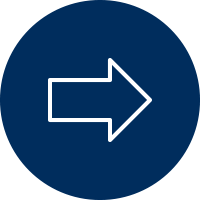“When we talked about disparities it was simply reflecting the data. We weren’t telling the whole story, we weren’t talking about the structural pieces. …Until we started looking through a lens of race, power and poverty, we really weren’t moving upstream. Now we’re focusing on the conditions that lead to the outcomes we see.”
-- Ben Duncan, Director of the Countywide Office of Diversity and Equity (Citation: Quantifying the Issue, #1)
1. What is quantifying the issue using a health equity lens?
“Quantifying the Issue” means to determining, indicating, or expressing the quantity of a public health issue or concern. Using a health equity lens when quantifying an issue means asking specific questions about populations most impacted or at-risk when collecting, analyzing or interpreting data.
“To Advance Our Evidence-Based Practice, We Need More Practice-Based Evidence.”
--Lawrence Green, DrPH
2. What methodologies are useful when quantifying an issue? What emerging techniques exist?
There are several tools that can help determine which data collection methods and types of data to use in your community. This module offers important questions and activities when quantifying health issues or concerns using a health equity lens.
For detailed methods and types of data to collect use the resources listed below.
-
APHA. BETTER HEALTH THROUGH EQUITY: Case Studies in Reframing Public Health Work.
-
Northwest Public Health Training Center. EBPH: Quantifying the Issue module.
-
Prevention Research Center in St. Louis. Evidence-Based Public Health: Module 3: Quantifying the Issue .
-
Rocky Mountain Public Health Training Center. Evidence-Based Public Health Online Course.
-
Community Toolbox. Collecting Information About the Problem.
-
County Health Rankings & Roadmaps. Assess Needs & Resources.
-
NACCHO. The Four Assessments.
Resources
3. Are there considerations when collecting data on community priorities?
When your agency, team, community-based organization, or community partnerships chooses health concerns/issues/priorities they want to investigate further, it is critical to use a health equity lens to ensure that they understand the issue fully.
Note: When collecting data using a health equity lens, it is important to consider that there may be alternative ways to collect data and different types of data to collect. Consider collecting data that involves photography, interviews, nominal group processes, videoclips, observations, and community audits. If quantitative data is difficult to collect or unavailable, you may determine that qualitative data (collected through interviews, nominal group processes, and videoclips) provides important context to the issue or provides more depth to the issue.

4. How do we use a health equity lens when conducting data analysis and interpretation?
Using a health equity lens when conducting data analysis and interpretation can provide a comprehensive understanding of the health and well-being of a community, including the health of underserved populations. Groups should conduct data analysis and interpretation by involving impacted populations in the assessment and data review process. In addition, groups should use data to identify health differences between populations as well as overall health outcomes, review both individual behaviors and social and economic conditions that impact health, and examine the policies and systems that influence health through those social and economic conditions.
Resources
-
Community Toolbox. Analyzing Community Problems.
-
Northwest Public Health Training Center. EBPH: Quantifying the Issue module.
-
Prevention Research Center in St. Louis. Evidence-Based Public Health: Module 3: Quantifying the Issue .
-
Rocky Mountain Public Health Training Center. Evidence-Based Public Health Online Course.
-
Health Evidence. Practice Tools.
-
Minnesota State Health Department. Health Equity Data Guide.

5. Are there important considerations when communicating data findings using a health equity lens?
Communication of findings is critical to the success of your team’s efforts. Not only do findings need to be presented to team members, but they should also be communicated to the larger community, especially among impacted populations. Communication can assist with community-buy in and commitment to future decisions and plans.
An important consideration when communicating data findings using a health equity lens includes the development of a communication plan that can help inform, build understanding, enhance visibility, change behavior, and garner support (Citation: Quantifying the Issue, #3). Other considerations when communicating findings include understanding your audience and translating the data findings to be tangible and easily understood concepts.
“The more you understand about an issue or health problem, the better you can plan a communication program that will address it successfully. The purpose of this initial data collection is to describe the health problem or issue, who is affected, and what is occurring versus what should be occurring. Doing this will allow you to consider how communication might help address the issue or problem."
-- NCI/DHHS. Making Health Communication Networks Work.
“There is no silver bullet, no single word or fact that will suddenly transform how people think about health. It is an intensely personal issue that carries with it complex beliefs, conflicted values and a deeply divided electorate about what leads to better health.”
-- Robert Wood Johnson Foundation, A New Way to Talk about Social Determinants of Health
Resources
-
APHA. BETTER HEALTH THROUGH EQUITY: Case Studies in Reframing Public Health Work.
-
Colorado State Government. Race and Ethnicity at Decision Points.
-
Community Toolbox. Collecting Information About the Problem.
-
Community Toolbox. Analyzing Community Problems.
-
Community Toolbox. Communicating Information about Community Health and Development Issues.
-
County Health Rankings & Roadmaps. Assess Needs & Resources.
-
Health Evidence. Practice Tools.
-
Minnesota State Health Department. Health Equity Data Guide.
-
Multnomah County, Oregon. 2014 Report Card on Racial and Ethnic Disparities.
-
NACCHO. The Four Assessments.
-
Northwest Public Health Training Center. EBPH: Quantifying the Issue module.
-
Prevention Research Center in St. Louis. Evidence-Based Public Health: Module 3: Quantifying the Issue .
-
Rocky Mountain Public Health Training Center. Evidence-Based Public Health Online Course.




